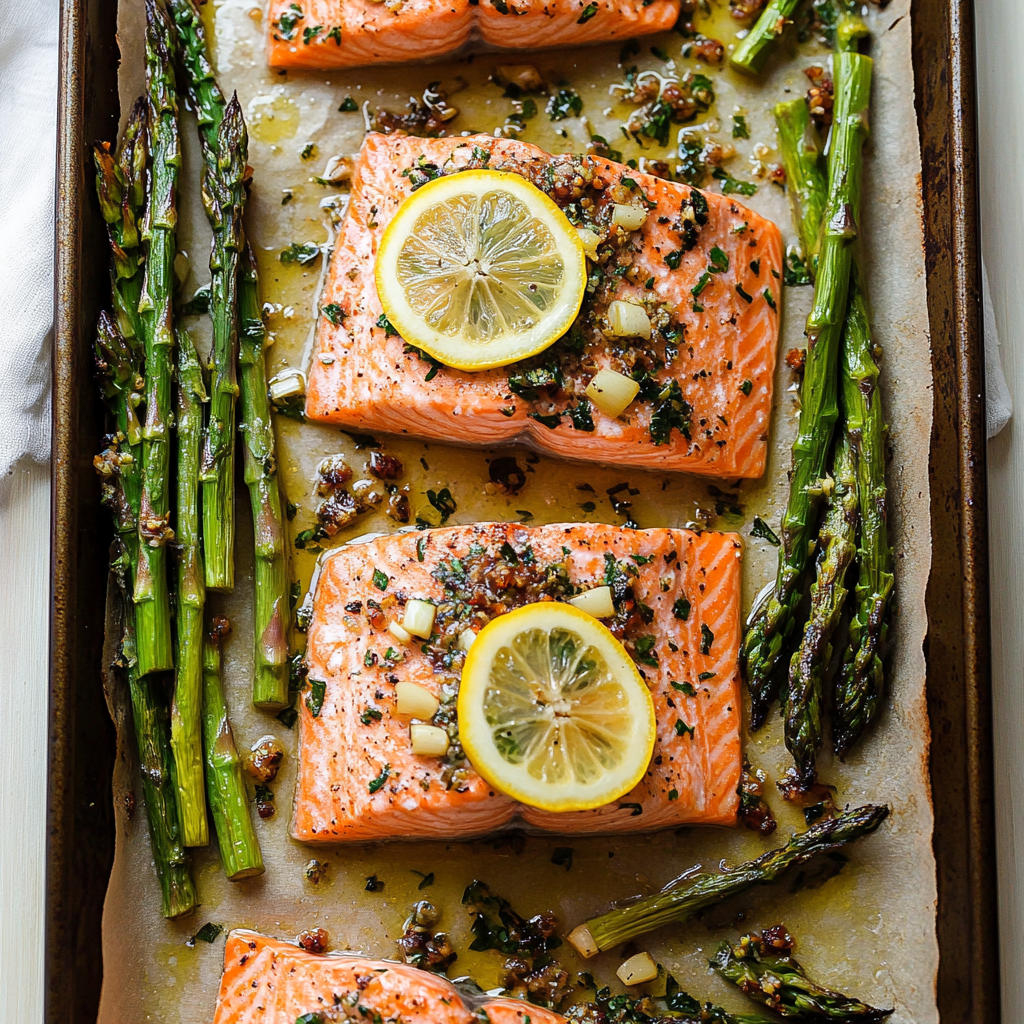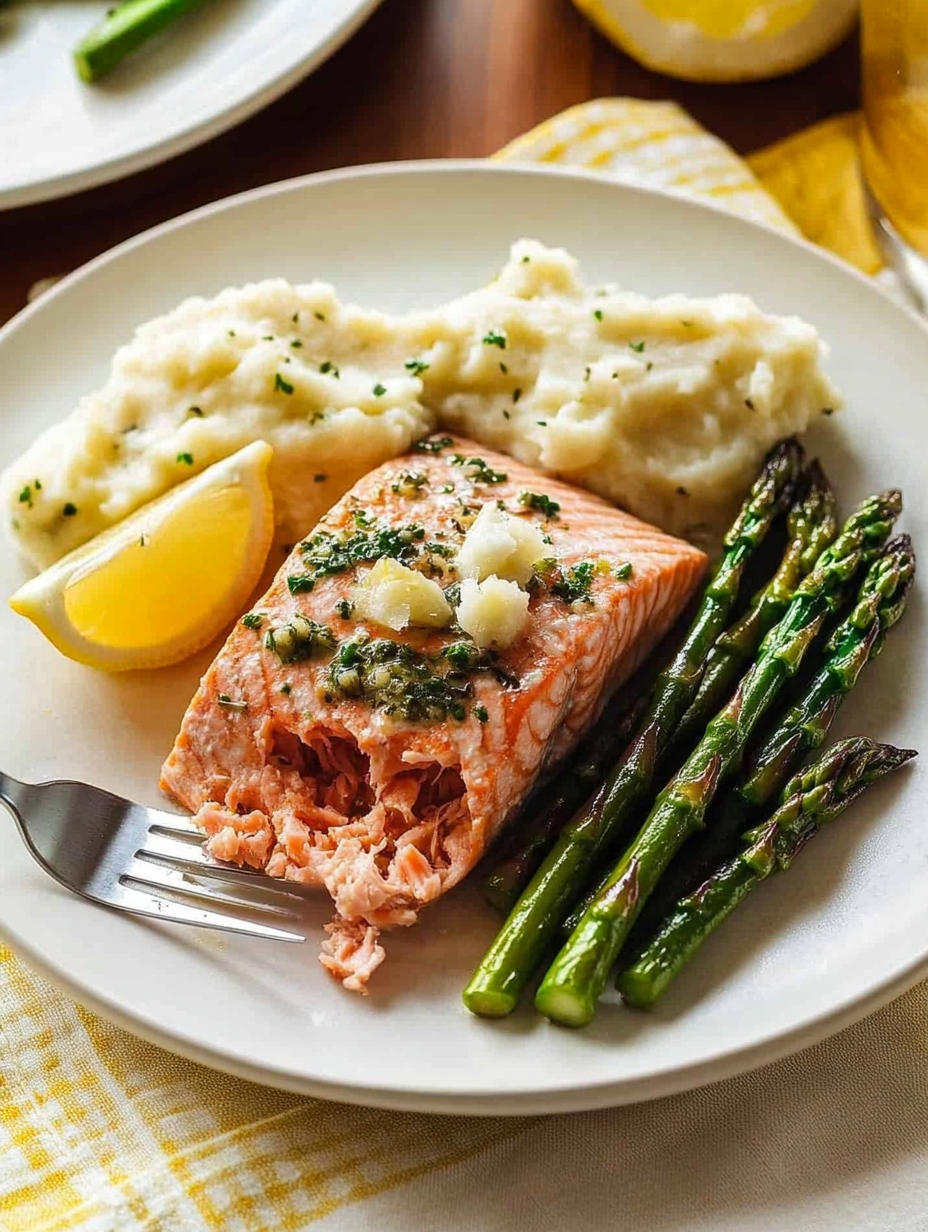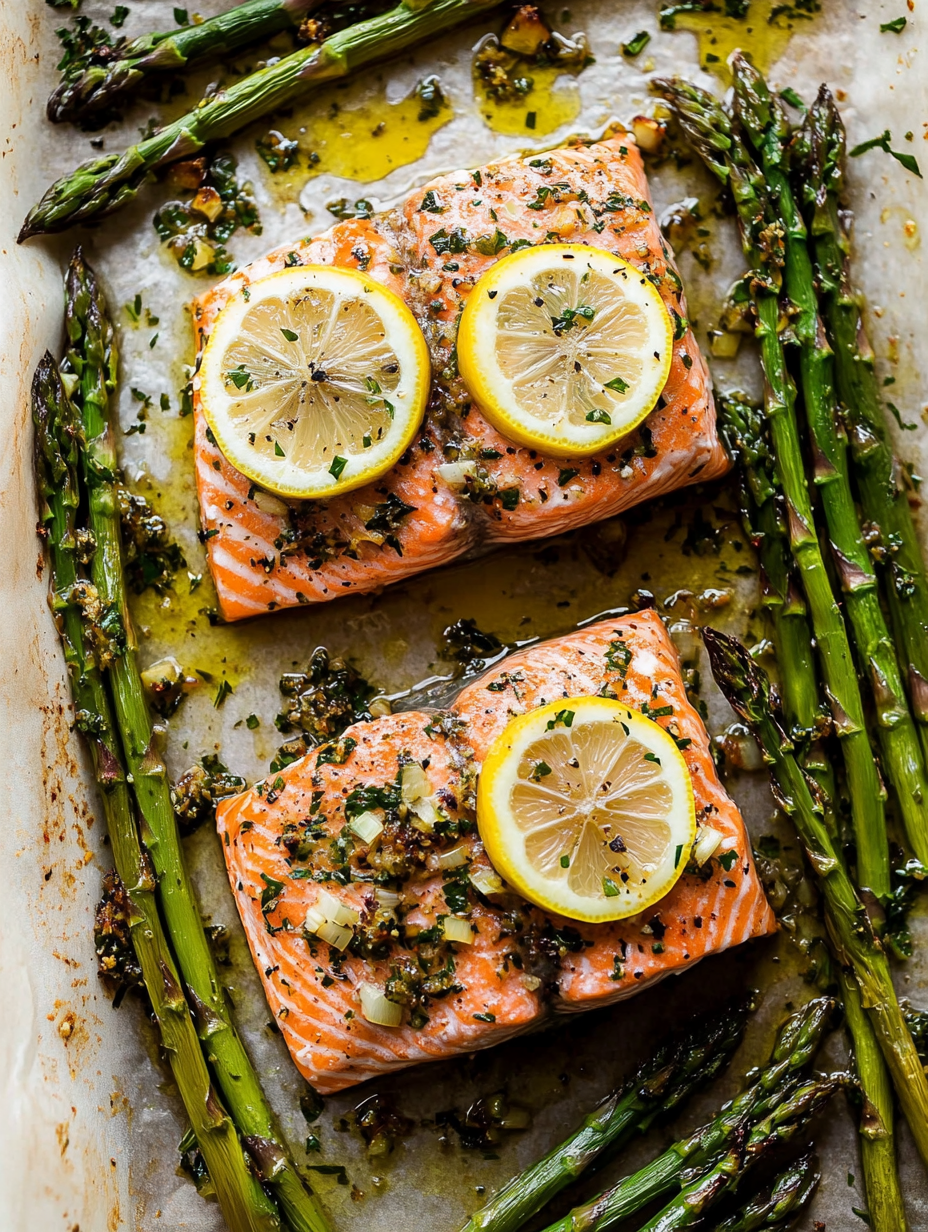 Pin it
Pin it
This flavorful and tender baked lemon garlic salmon takes about 30 minutes to make and delivers restaurant-quality results with minimal effort. The bright lemon garlic butter sauce infuses the fish with incredible flavor while keeping it moist and succulent.
I first made this salmon recipe during a hectic work week when I needed something impressive yet effortless. Now it's in my regular rotation for dinner parties and family meals alike because it never fails to wow everyone at the table.
Ingredients
- Fresh salmon fillets: Look for bright flesh with no brown spots for the freshest flavor
- Unsalted butter: Creates the rich base for our sauce without overwhelming the delicate fish
- Olive oil: Helps prevent the butter from burning and adds its own fruity notes
- Fresh garlic cloves: Use freshly minced for the most vibrant flavor impact
- Lemon juice: Must be freshly squeezed for the brightest taste that bottled cannot match
- Fresh herbs: Choose the freshest bunches for maximum aromatic impact
- Flaky sea salt: The larger crystals provide perfect seasoning and slight crunch
- Black pepper: Freshly ground releases more essential oils for better flavor
- Lemon slices: Optional but create a beautiful presentation and add extra citrus infusion
Step-by-Step Instructions
- Prepare Your Oven And Pan:
- Preheat your oven to 400°F and line a baking sheet with parchment paper or foil. This temperature is ideal for getting a slight caramelization on the exterior while keeping the interior moist and tender. If using foil brush it with a thin layer of olive oil to prevent sticking.
- Arrange The Salmon:
- Place your salmon fillets in the center of the prepared pan ensuring they have a little space between each piece for even cooking. If adding vegetables arrange them around the edges where they'll catch all the delicious butter sauce that runs off.
- Create The Flavor Base:
- Melt butter and olive oil together in a small pan over medium heat until the butter is completely melted. Add minced garlic and cook for exactly one minute until fragrant but not browned. Browning the garlic will create bitterness so watch it carefully.
- Finish The Sauce:
- Remove the pan from heat and immediately stir in lemon juice herbs salt and pepper. The warm butter will bloom the dried herbs if using and infuse the sauce with their essential oils. The acid from the lemon juice creates the perfect balance to the rich butter.
- Dress The Salmon:
- Spoon the warm sauce evenly over each fillet making sure to coat the entire surface. If desired place a lemon slice on top of each piece which will not only look beautiful but infuse more citrus flavor as it bakes.
- Bake To Perfection:
- Bake for 15 to 20 minutes depending on thickness. The salmon should be opaque and flake easily with a fork. For perfectly cooked salmon aim for an internal temperature of 145°F which ensures food safety while maintaining moisture.
 Pin it
Pin it
The secret to this dish is truly in the fresh lemon juice. My grandmother always said never trust a fish recipe that doesn't include lemon and after years of cooking I completely agree. The acidity cuts through the richness of the salmon and brightens every bite.
Storage Tips
Properly stored salmon can maintain its quality for several days after cooking. Allow the salmon to cool completely before transferring to an airtight container. Refrigerate for up to 3 days. I recommend enjoying leftover salmon cold in salads or sandwiches rather than reheating which can sometimes dry out the fish and create stronger fishy flavors.
Foolproof Variations
This recipe serves as a perfect base for countless variations. Try adding a tablespoon of honey or maple syrup to the sauce for a sweet glaze. For a Mediterranean twist incorporate olives capers and sundried tomatoes alongside the lemon. Smoked paprika and a touch of cayenne can transform this into a slightly spicy version that pairs beautifully with cool yogurt sauce on the side.
Perfect Pairings
The clean bright flavors of this salmon work wonderfully with so many side dishes. Serve it alongside roasted asparagus and fingerling potatoes for a complete sheet pan meal. For a lighter option try it with a citrus arugula salad and quinoa. When entertaining pair it with a crisp Sauvignon Blanc or Pinot Grigio which complements the lemon notes without overwhelming the delicate fish.
Avoiding Common Mistakes
Salmon thickness varies greatly so always cook by temperature rather than strictly by time. Overcooking is the most common error with salmon resulting in dry tough fish. Remove the salmon just as it begins to flake easily the center should still be slightly translucent as it will continue cooking from residual heat. Always let salmon rest for a few minutes before serving to allow the juices to redistribute throughout the flesh.
 Pin it
Pin it
Frequently Asked Questions
- → How do I know when the salmon is done?
The salmon is done when it is opaque, flakes easily with a fork, and its thickest part reaches an internal temperature of 145°F (63°C).
- → Can I use frozen salmon?
Yes, but make sure to completely thaw the frozen salmon before preparing the dish to ensure even cooking.
- → What other fish can I use?
This method also works well with cod, halibut, or similar fish. Adjust cooking times based on thickness.
- → Can I roast vegetables with the salmon?
Yes, you can roast vegetables like asparagus, broccoli, or baby potatoes on the same pan. Chop them small to ensure even cooking.
- → What herbs work best for this dish?
Parsley and dill are ideal, but you can also use cilantro, basil, thyme, chives, or oregano to complement the salmon.
- → How should I store leftovers?
Store leftovers in an airtight container in the refrigerator for up to three days. Reheat gently or enjoy cold.
- → Can I adjust the level of seasoning?
Absolutely! Adjust the amount of garlic, lemon juice, and herbs to suit your personal taste preferences.
